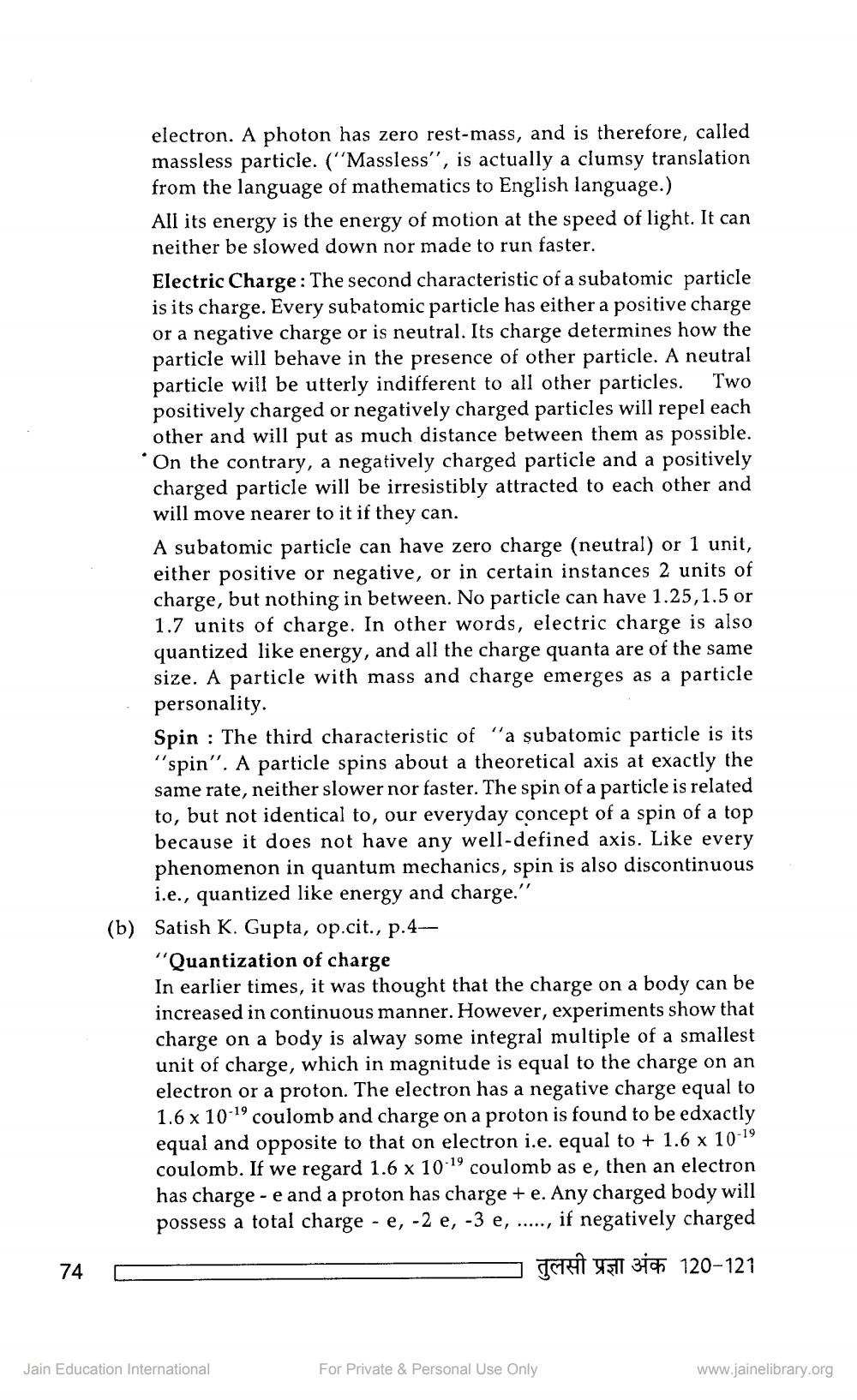________________
74
electron. A photon has zero rest-mass, and is therefore, called massless particle. ("Massless", is actually a clumsy translation from the language of mathematics to English language.)
All its energy is the energy of motion at the speed of light. It can neither be slowed down nor made to run faster.
Electric Charge: The second characteristic of a subatomic particle is its charge. Every subatomic particle has either a positive charge or a negative charge or is neutral. Its charge determines how the particle will behave in the presence of other particle. A neutral particle will be utterly indifferent to all other particles. Two positively charged or negatively charged particles will repel each other and will put as much distance between them as possible. On the contrary, a negatively charged particle and a positively charged particle will be irresistibly attracted to each other and will move nearer to it if they can.
A subatomic particle can have zero charge (neutral) or 1 unit, either positive or negative, or in certain instances 2 units of charge, but nothing in between. No particle can have 1.25,1.5 or 1.7 units of charge. In other words, electric charge is also quantized like energy, and all the charge quanta are of the same size. A particle with mass and charge emerges as a particle personality.
Spin The third characteristic of "a subatomic particle is its "spin". A particle spins about a theoretical axis at exactly the same rate, neither slower nor faster. The spin of a particle is related to, but not identical to, our everyday concept of a spin of a top because it does not have any well-defined axis. Like every phenomenon in quantum mechanics, spin is also discontinuous i.e., quantized like energy and charge."
(b) Satish K. Gupta, op.cit., p.4
'Quantization of charge
In earlier times, it was thought that the charge on a body can be increased in continuous manner. However, experiments show that charge on a body is alway some integral multiple of a smallest unit of charge, which in magnitude is equal to the charge on an electron or a proton. The electron has a negative charge equal to 1.6 x 10-19 coulomb and charge on a proton is found to be edxactly equal and opposite to that on electron i.e. equal to + 1.6 x 10-19 coulomb. If we regard 1.6 x 10-19 coulomb as e, then an electron has charge-e and a proton has charge + e. Any charged body will possess a total charge - e, -2 e, -3 e,....., if negatively charged
तुलसी प्रज्ञा अंक 120-121
Jain Education International
For Private & Personal Use Only
www.jainelibrary.org




